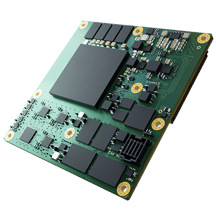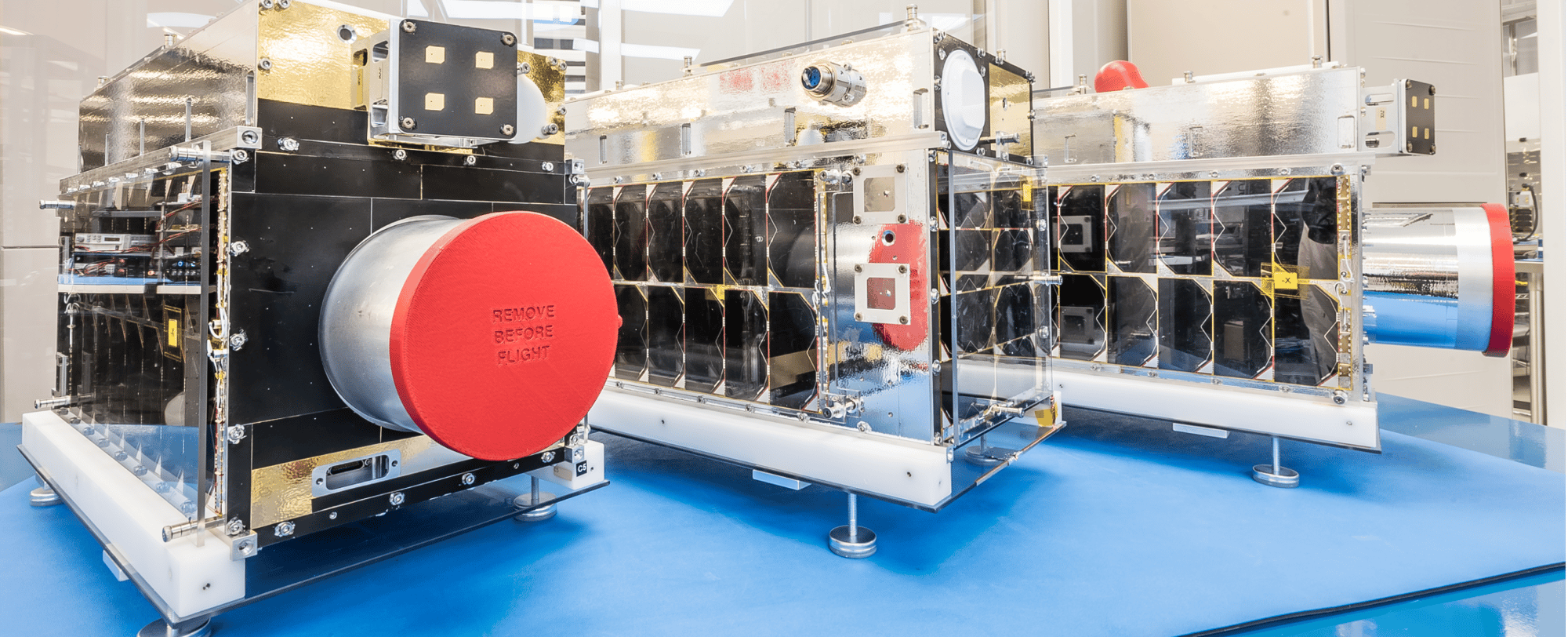
How GHGSat Expanded Earth Observation Data Processing with Xiphos' Processors and Custom Daughterboards
In the rapidly advancing field of Earth Observation (EO), where higher-pixel cameras and innovative capabilities like edge computing are increasingly used to generate high-resolution images at speed, satellite and remote sensing organizations face the challenge of integrating these advancements into existing systems. Drawing on these advancements involves managing massive data loads at high speeds, mitigating risks associated with new technologies, and ensuring protection against on-orbit errors due to radiation—all while keeping development costs reasonable.
GHGSat, a leader in high-resolution remote sensing of greenhouse gases, turned to Xiphos to find a solution to these challenges. They commissioned Xiphos to develop custom camera interface boards, which allowed them to leverage Xiphos' robust Q-Card processors to accelerate the processing of their high-resolution satellite imagery. This allowed them to deliver emissions data to government and industry decision-makers at unprecedented speed. GHGSat was able to integrate the processing of their cutting-edge EO technology onto Xiphos' hardware, ensuring high performance and reliability in the harsh environment of outer space.
The ask
As GHGSat embarked on designing satellites equipped with the latest EO technology, they sought a Commercial-Off-the-Shelf (COTS) processor that offered high performance, robustness, and proven flight heritage while minimizing development costs. They also needed a custom daughterboard to provide the high-speed data, command and control, and power interfaces required by their payloads. This daughterboard is the bespoke element that is fully optimized for GHGSat's payload, host bus, and mission; it seamlessly melds the purpose of the spacecraft with the capabilities of the Q-Card processor. To meet their mission objectives, custom image processing logic, hosted on the Xiphos Q-Card FPGA fabric, was also required. FPGAs are ideally suited for image processing functions such as bad pixel correction, binning, lens distortion correction, registration, coadding, TDI, and compression.
.webp?width=1052&height=536&name=52077520481_1a33bd2dba_o%201%202%20(1).webp)
→ High-Speed Data Management
GHGSat's mission requires pixel-speed image processing and high-speed data transfers from onboard cameras into storage. This is a direct enabler that maximizes the quantity and speed of observations taken by the satellites.
→ Pixel Correction
GHGSat's satellite monitoring involves correcting image distortion and artifacts in real time to offset the effect of bad pixels and lens distortion. These capabilities are critical to pinpointing methane plumes and correctly identifying facility-level greenhouse gas emissions for GHGSat's government and industry customers. A solution with custom logic and proven image correction capabilities was a must.
→ Flight Heritage
Concerned about the possible risks involved in developing an untested solution, GHGSat sought flight-proven processors and an experienced and proven partner to provide the payload processor and develop its custom daughterboard.
Xiphos' Q-Card processors have always been an extremely reliable part of our payload, and their performance in orbit is flawless. We've never had any issues with their quality or performance—the opposite, in fact: Xiphos has helped us debug and address issues with other systems. The performance and robustness of their products, coupled with their professionalism, rigor, and design approach, have been instrumental to the success of GHGSat.
— Stephane Germain, President of GHGSat
Solution

GHGSat initially selected Xiphos' Q7 spaceflight-ready miniature processing board due to its robustness, high processing performance, small SWaP, and proven flight heritage. Later, when the company upgraded to a more advanced camera with four times more pixels, GHGSat switched to a Q8 processor with a new custom Q8-based daughterboard for ad>ditional processing speed and power.

As GHGSat rapidly expanded and scaled its operations, Xiphos developed three iterations of solutions that leveraged its Q7 and Q8 processors in collaboration with GHGSat, supporting the company's evolving capabilities and integrating with their changing camera requirements. Through 12 satellite launches and 8 years in operation, these processing subsystems have supported GHGSat's need for reliable, radiation-tolerant satellites with low SWaP and high performance, acting as a consistent partner throughout the successful deployment of GHGSat's satellite constellation. These solutions have proven to be reliable, robust, and powerful, enabling GHGSat's mission to monitor greenhouse gases from space.
Results
4x Throughput Increase
Implementing the Q8 allowed GHGSat to increase system throughput by fourfold, putting more available capacity on each satellite and eliminating bottlenecks between the payload and the downlink. Today, GHGSat's satellite constellation takes millions of readings annually—in 2023 alone, the constellation captured more than three million readings across 85 countries.
10-20 Watts Saved per Satellite
The small size and low power consumption of Xiphos' Q-Card processors saved GHGSat 10-20 watts of power per payload, reducing the size and cost of each satellite. These savings could then be invested to increase the size of the constellation, building GHGSat's capacity to provide comprehensive and robust emissions coverage to its government and industry customers.
12 Satellites in Orbit
GHGSat now has 12 Q-Card-based satellites in orbit, with four more scheduled to launch in the near future—creating the largest fleet of high-resolution emissions-monitoring satellites in operation. The vast amount of facility-level data generated by GHGSat's sensors has enabled a new record for the fastest satellite-enabled emissions mitigation ever, delivering data on methane leaks to GHGSat customers so that they could be mitigated in hours instead of silently leaking greenhouse gases into the atmosphere for weeks.

Conclusion
Xiphos' robust Q-Card processors and custom daughterboards have allowed GHGSat to speed up data processing, reduce power consumption, and maintain consistently reliable performance in harsh space environments—powering new innovations in high-resolution remote sensing. As GHGSat's example demonstrates, Xiphos' flight-proven technology can help mitigate risks and streamline satellite development, providing the reliability, efficiency, and performance necessary to meet the demanding requirements of modern EO missions. With a focus on understanding its customers' unique needs, Xiphos develops custom daughterboards to enable specific missions and fulfill use cases ranging from optical payload interfaces such as GHGSat to Software-Defined Radios (SDRs), OBCs, C&DH payload hubs, bulk storage, and more.
About Xiphos
Xiphos develops cutting-edge computing solutions tailored for extreme space environments. Leveraging automotive and industrial-grade components in a fault-tolerant architecture, we provide robust performance costing a fraction of traditional space solutions. By prioritizing compactness, energy efficiency, flexibility, and high performance, Xiphos offers effective alternatives to traditional flight processors for spacecraft, unmanned vehicles, robotics, and many other platforms.
About GHGSAT
GHGSat uses its own satellites and aircraft sensors to measure greenhouse gas emissions directly from industrial sites, providing actionable insights to businesses, governments, and regulators. With proprietary remote-sensing and patented technology, GHGSat enables strategic decision-making through monitoring and analytics services with better accuracy, more frequently, and at a fraction of the cost of other technologies. GHGSat's mission is to become the global reference for remote sensing of greenhouse gas (GHG), air quality gas, and other trace gas emissions from any source in the world.
For more about the GHGSat Constellation, click here.